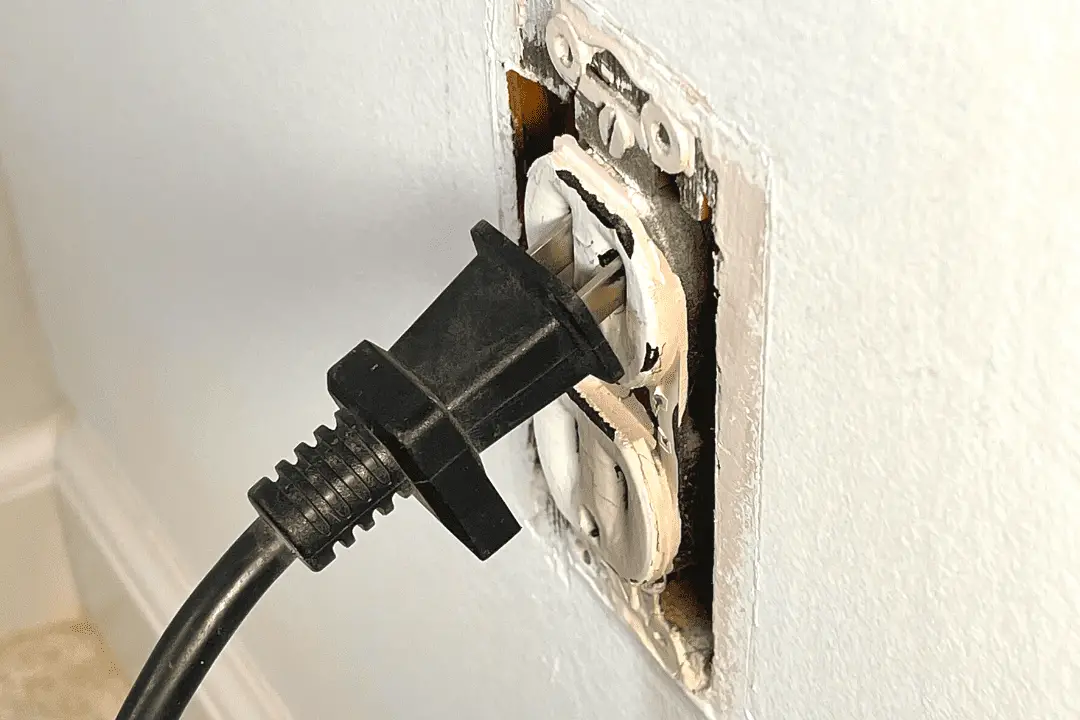There’s no doubt about it: having functional outlets is very important! We likely interact with our outlets every day – plugging in everything from laptops to hairdryers – and they power the devices we rely on. So when plugs won’t stay in the outlets or keep falling out, it’s very annoying. Even worse, it’s also potentially a fire hazard.
Keep reading to find out why this happens, what’s going on inside the outlets, and of course, how to fix this irritating issue, so you don’t have this problem going forward.
DISCLAIMER: This video and description contain affiliate links, which means that if you click on one of the product links, I’ll receive a small commission.
Help! Why do plugs fall out of outlets? And why are hotel outlets often so bad?
If everything seems to be loose and not snug when plugged into your outlet, there’s a good chance your contacts are simply worn out. This is not common if you have three-prong plugs. Usually, the ground plug provides you a little more tension to hold the outlet – even a worn-out one.
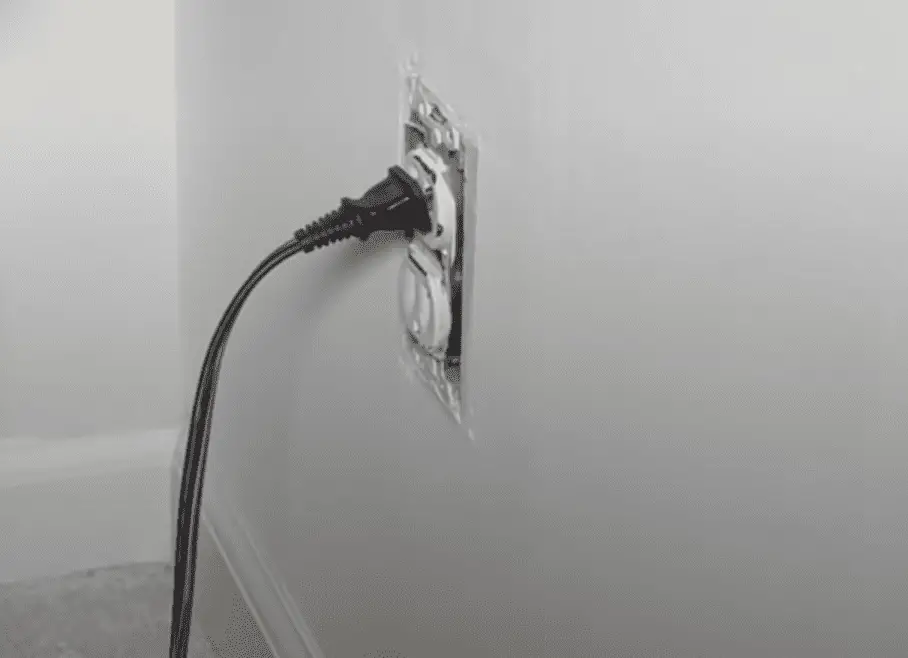
But if you have a two pronger — just the weight of the cord tends to pull that plug out of the outlet. This can be a safety hazard because you start to expose a connected “hot” side of metal (the blade) from that plug going in.
You’ve probably dealt with loose outlets that won’t hold onto anything at hotels, which makes sense because it’s being used with people plugging and unplugging cords with different guests and housekeeping staff coming in and out. All that activity and current creates heat so it really wears out those outlets.
Home Hacks: 3 Solutions to Fix Loose Plugs
Here are three potential solutions to make loose plugs more secure, ranging from quick fixes to long-term solutions.
- Slightly bend the prongs of your plug: This is not going to solve your problems forever, but it can help you in the short term, particularly if you’re at a hotel or somewhere temporary. Just be mindful not to over-bend them, which could leave you in an even more frustrating position without a functioning and an unusable outlet!
- Buy a pack of Snug plugs: These work as simple fasteners to get your brackets to take up more space in the outlets, making them more secure and snug (hence the name). They get pretty great reviews on Amazon! So it’s a good option to consider.
- Change the outlet: This by far is the most in-depth of the three, but it’s also going to give you a long-term solution. Keep reading to find out how to do this!
How to Swap in a New Outlet + Back Wire
1. Remove the old outlet
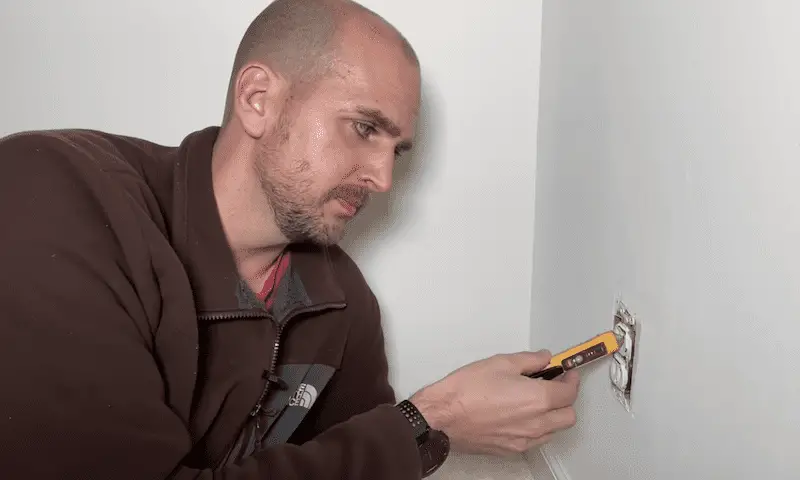
REMEMBER: If you’re ever removing an outlet, make sure the power is turned off. Flip the circuit breaker or remove the fuse depending on what your setup looks like. You can use a non-contact voltage tester or a simple outlet tester. Keep in mind that many licensed electricians don’t like the non-contact voltage testers. Read safety tips on voltage testers here.
After turning off the power, take the two mounting screws out, so you can remove the outlet from the electrical box.
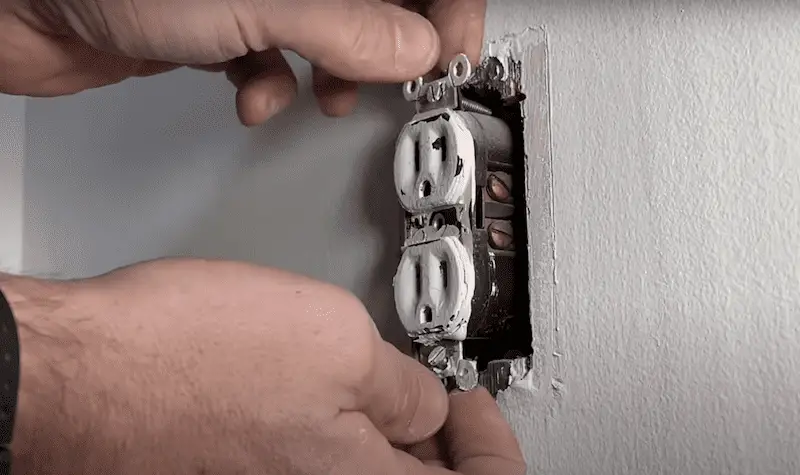
Then loosen all the different screw terminals.

You might not have two hots and two neutrals coming in and your wire colors might be different. Red is the hot side for me (but black might be your hot side) and white is my neutral. The green wire is for ground – and you’ll probably have a bare copper wire.
You’ll probably have to open up those J hooks or shepherd hooks a little bit to get them from out around the screw terminal. Be careful if you have short wires and not much extra wire, you don’t want to damage the insulation because you’re going to need to reuse as much wire as possible!
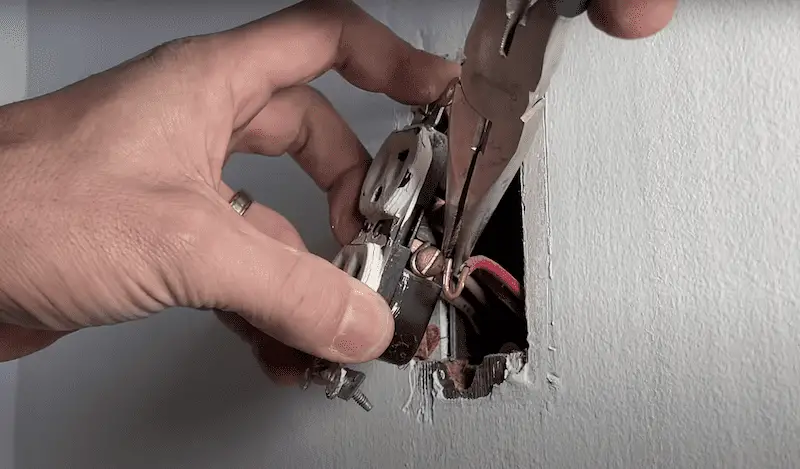
So you don’t want to make it too short, which would make it difficult to rewire the new outlet. Finish off by removing the two neutrals and then you can open up this old outlet.
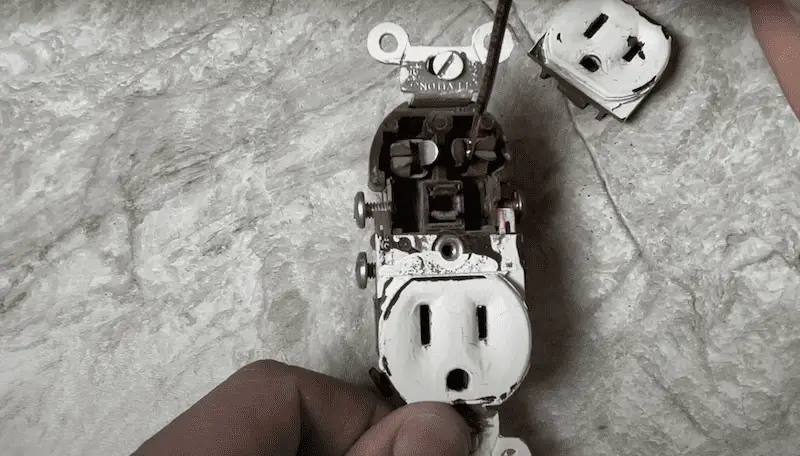
What I noticed is the clearances that would hold the blades on a plug have really opened up. I even can pass a wire between the clearances. If I were to take a new commercial-spec outlet and try to pass that same wire, it wouldn’t happen – it’s much tighter.
Overall, since it has really opened up — that is why it’s not holding the neutral and hot side of the plug. It’s time to swap that out!
2. Use the strip gauge
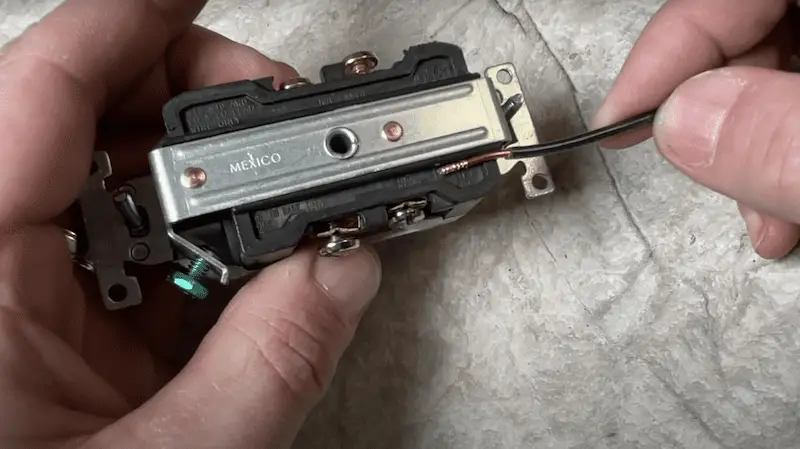
There’s a strip gauge that you can match up to find out how much copper you need.
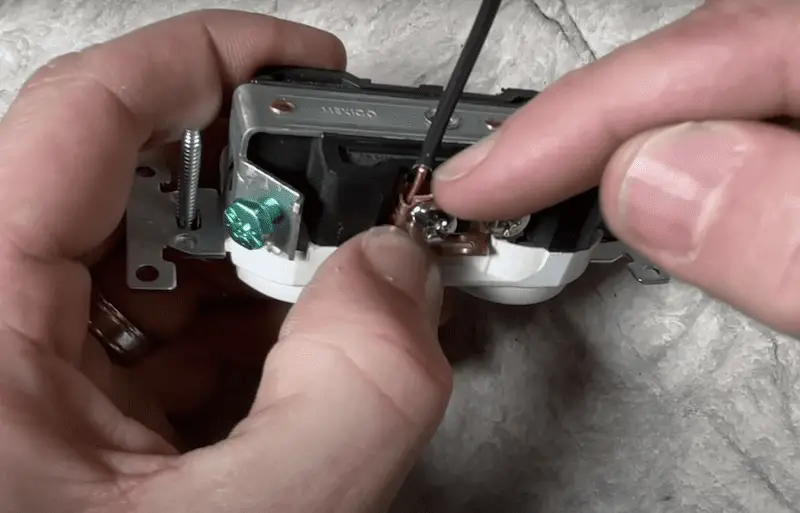
From here, you can pass the wire right straight in and then screw that down and that plate is going to hold that in place. This will securely hold your hot and neutral side.
2. Do a shepherd’s hook + strip
Then you will have to do a shepherd’s hook for the ground.
Remember, gold screw terminals represent your hot side and silver is your neutral side. So quickly go through, cut, and strip these to get them to the correct size and ready to back wire. I have plenty of wire, so I’m not worried about cutting them too short.
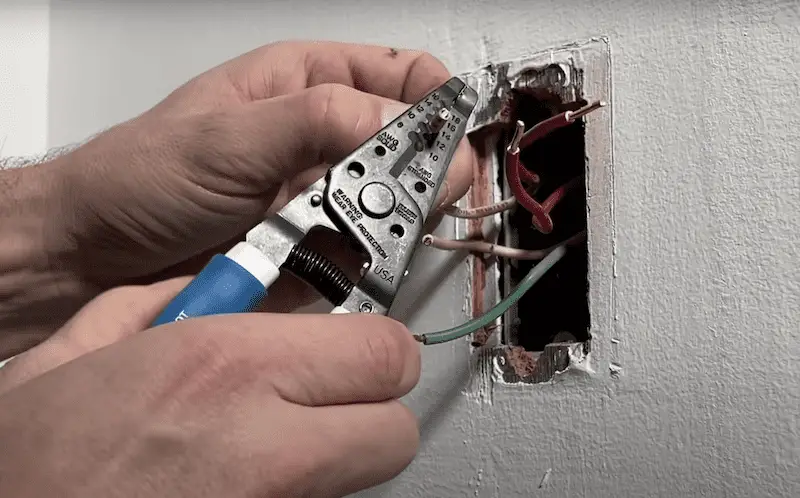
Note: When you’re using the strippers you’re probably comfortable with them but if not – you’re going to have your gauge of wire listed on the left-hand side, if it’s solid core. This would be used for 12 gauge (what I used), but if you used the 14 gauge hole you’re going to also damage the copper, which is going to weaken it and that could cause you problems long-term.
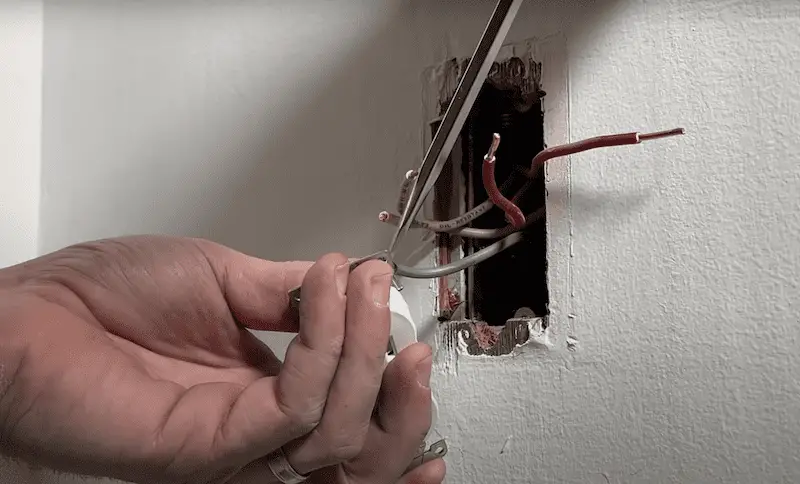
At this point, put the ground on, close up the shepherd’s hook a little bit around the screw so there’s good contact all the way around, and then tighten it. ** Go in a clockwise direction around the green screw for your wire.
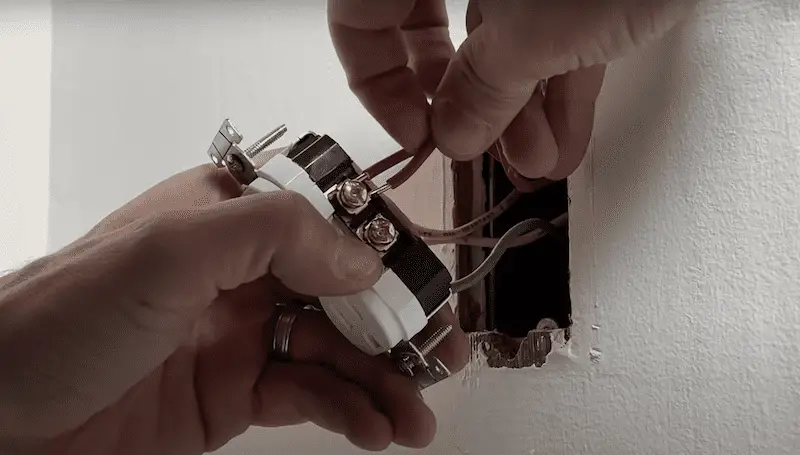
Once you have the two hots and two neutrals that you need to install, put the two hots on the same screw terminal. These are made to fit two wires (one on each side and then the two neutrals on the top on the opposite side). Again, gold is for hot and silver for neutral.
You probably have a plastic electrical box (I actually have a metal one). Best practice is if you have any unused terminals, you do want to screw them all the way in – especially on the hot side.
Note: Another option for this type of setup is to bring the hot, neutral, and ground into 3 separate pigtails and then have only 1 wire going to each of the 3 screw terminals. This is actually the preferred method of most licensed electricians. If you would like more info on Pigtails here is a video that will go over the method on this same outlet.
3. Check your work
Make sure everything’s secure and there are no weak points. Then tuck your wires back into the box so you can tighten down your mounting screws.
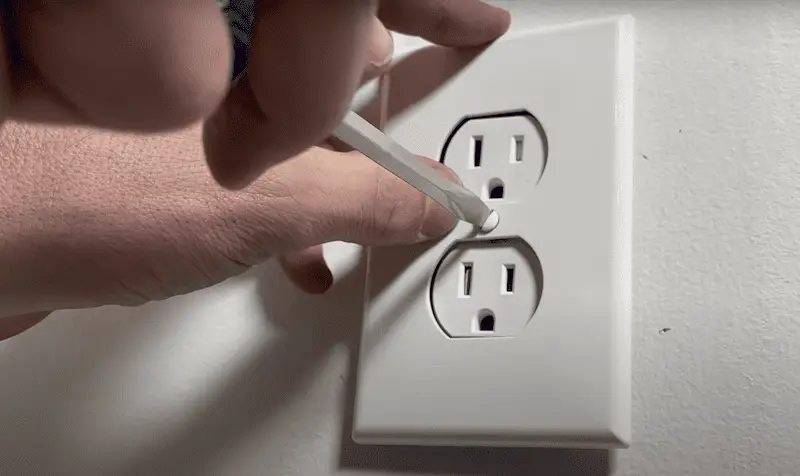
With the power back on, do a quick check with the outlet tester. If it looks good, the true test is to see if there’s a nice secure hold. If it feels snug, you’re good to go and hopefully won’t have any issues for years to come.
Outlet Recommendations: What to Keep In Mind
What outlet do you swap with an old one? See this video breaking down the two different outlets.
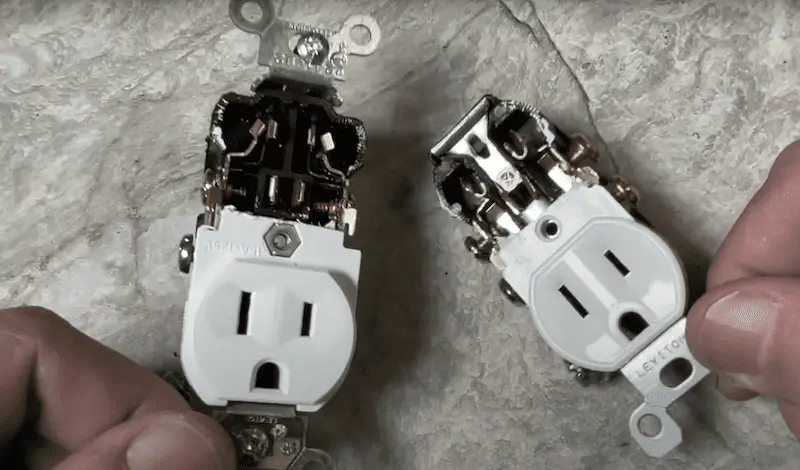
There’s a standard residential grade – it’s not tamper-resistant and it’s about 50 cents (right side in photo). There’s also a commercial grade made by Leviton, which is $2 (left in photo). While it’s slightly more expensive, the latter is what I would recommend. Here’s why:
- Safety: Depending on your area, you’re most likely going to need tamper resistant. And if you’re taking the time to replace – whether you’re doing it or hiring someone else to do it – get yourself an upgrade with a commercial grade tamper resistant one.
- Back wiring feature: It has the feature where you can back wire, so you won’t have to do those Shepard hooks, which you would usually. (If you’re going to do a shepherd hook or a j-hook around the screw, remember it goes clockwise around and then you want all copper with no insulation being pinched between the screw as you tighten it down.) Read more about back wiring here.
The Wrap Up
I hope this blog helped you out and also gave you a little bit more details on what’s going on with your outlets. Let me know in the comments if this helped!
